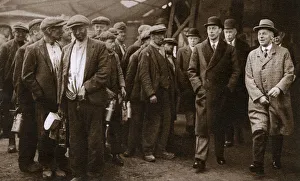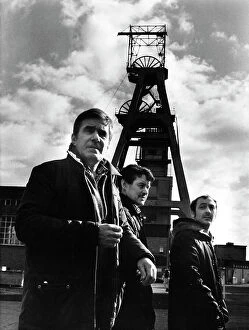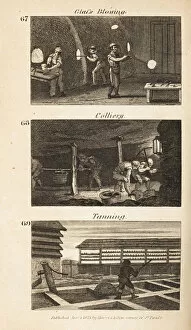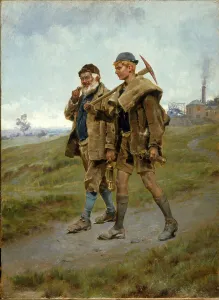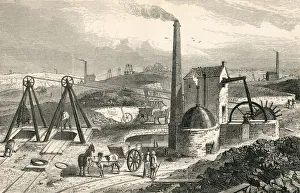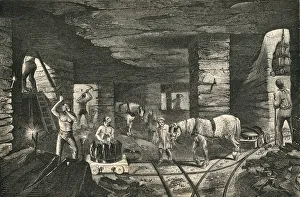Coalminers Collection
"Unveiling the Grit: The Lives Through Time" Step into the depths of history as we explore the world of coalminers
All Professionally Made to Order for Quick Shipping
"Unveiling the Grit: The Lives Through Time" Step into the depths of history as we explore the world of coalminers, those brave souls who toiled beneath the earth's surface. From "Coalminers Leaving the Pit, Unknown Colliery" to "Pickets at Snowdown Colliery, " their stories unfold like chapters in a gripping novel. Even royalty couldn't resist witnessing this arduous profession firsthand. "The Duke of York visits the Pit at Atherton, Lancashire, " capturing a moment when even nobility recognized the significance and challenges faced by these hardworking individuals. Trades in Regency England were diverse, ranging from glass-blowing to colliery work and tanning. Among them were charcoal burning and Jew selling - trades that shed light on lesser-known aspects of society during that era. Artistic masterpieces such as "Going Home, 1888 (oil on canvas)" depict weary miners making their way back after an exhausting day underground. Their faces etched with determination and resilience tell tales untold. Witnessing machinery like Whimsey or Engine Drawing Coal in Staffordshire Collieries showcases technological advancements that revolutionized mining practices during the 19th century. Meanwhile, Bradley Coal Mine near Bilston takes us back in time as we witness ten-yard coal extraction methods employed by workers. Intriguingly named Hurriers played a crucial role in transporting mined coal; they were often children or women working alongside colliers deep within Lancashire pits. These unsung heroes are immortalized through historical records such as Charles Tomlinson's Cyclopaedia Of Useful Arts And Manufactures. Not limited to men alone, women also contributed significantly to this industry and can be seen carrying coal to surface mines throughout East Scotland during this period - strong-willed individuals defying societal norms for survival and progress. Imagine standing among a group of coal miners, waiting to embark on their shift.


